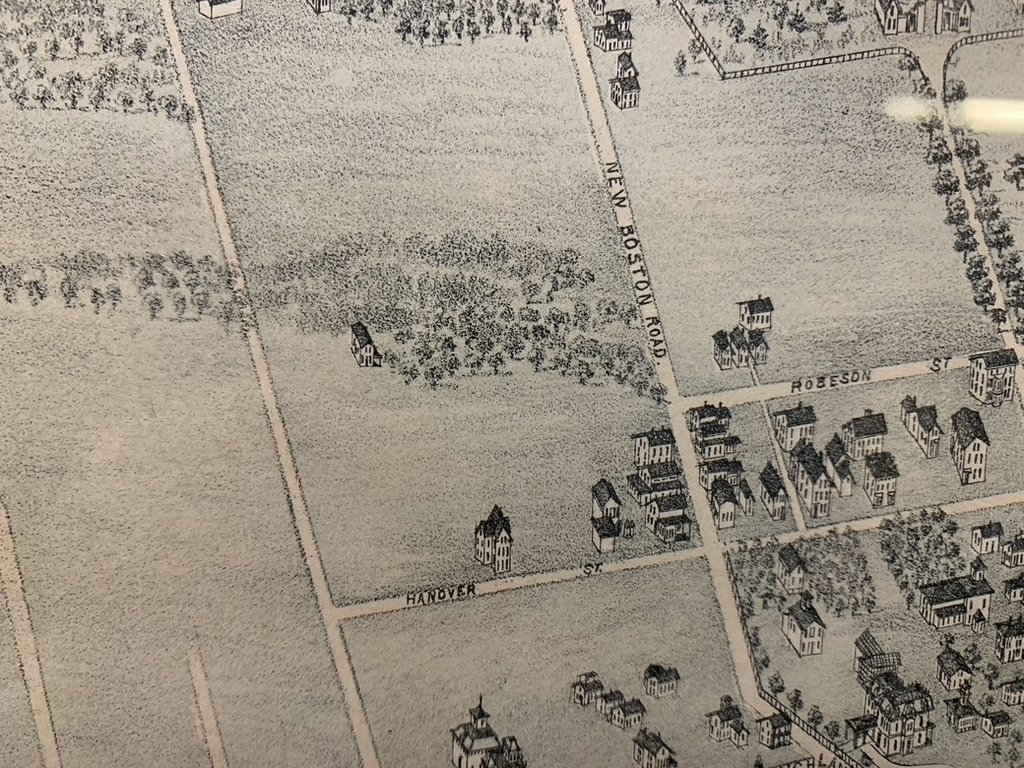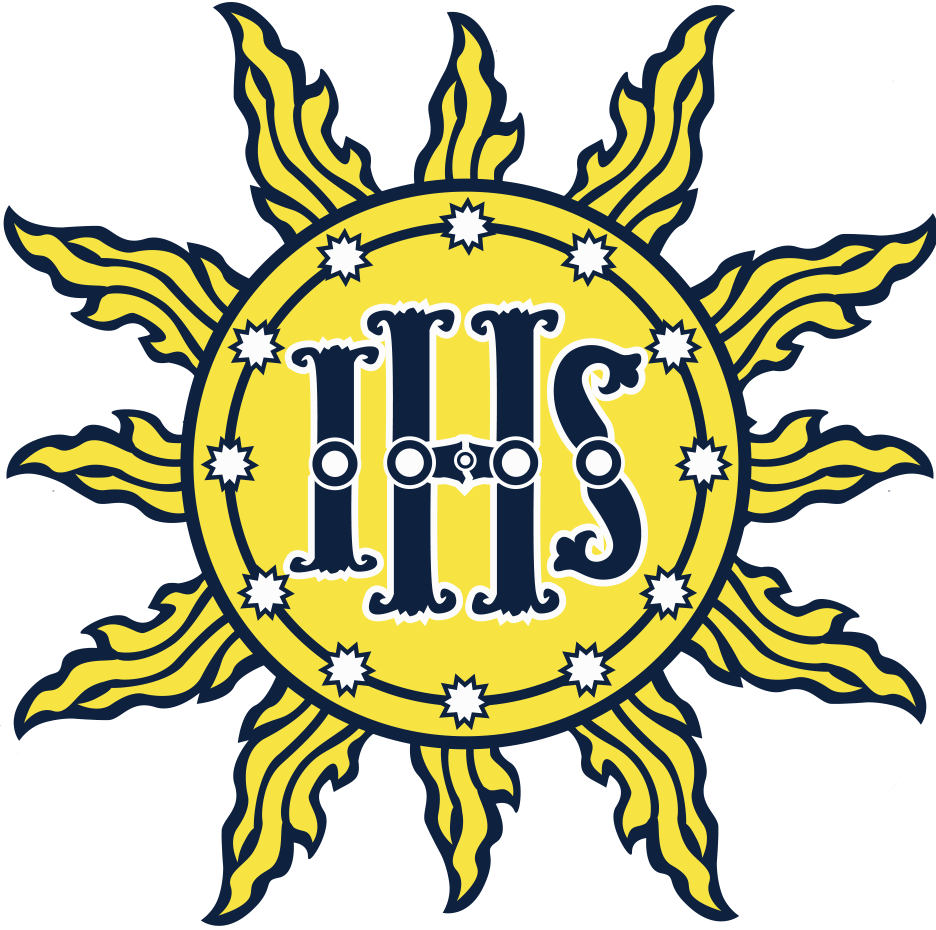
Parish History
The first parishioners experienced their first Masses as a parish community in a tent on Stanley Street, behind the fire station. Parishioners joined from both Sacred Heart and St. Joseph’s Parishes. (Credit: Church of the Holy Name archives)
Before they entered the Promised Land, the People of God met to worship in a tent. For the People of God gathered as the newly-formed Church of the Holy Name in Fall River on June 10, 1923, their beginnings would be the same, as they gathered for Mass in a tent on Stanley Street.
This occasion was the culmination of a long period of growth for the church in Fall River. By the turn of the twentieth century, a successful segment of second- and third-generation Roman Catholics were intent on “moving on up”, literally and figuratively, to the Highlands in the northerly end of Fall River, then the almost exclusive bastion of the predominant Yankee establishment.
Competitive instincts had been sharpened, particularly within the Irish-American community, by passed down oral tradition that preserved stories of sometimes unfriendly and repressive treatment endured by their immigrant ancestors.
Two figures stand out in the early history of our community. The first is founding pastor Fr. George B. McNamee, who chose the name for the new parish out of a deep devotion to the Holy Name of Jesus. The second is Thomas F. Higgins, mayor of Fall River (1911-1913) and a distinguished attorney, who would be instrumental in persuading Hannah, Frank, and Grace Wordell to convey property to the Roman Catholic Bishop of Fall River in consideration of $1. The land transfer, dated March 7, 1923, with an outer parameter of President Avenue, Stetson, Pearce, and Read Streets, now became the boundaries of Holy Name Parish.
During that first Mass, the congregation heard the accurate yet hopeful statement from their new pastor:
“We start from the very bottom, but by the Grace of God we will succeed and prosper.”
The first edifice for the Church of the Holy Name was located on Pearce Street. It was built in 1923. (Credit: Church of the Holy Name archives)
Undaunted by a rudimentary beginning featuring Mass held outdoors with borrowed city-owned furniture, followed by worship in an unheated tent, the first church (later parish hall) fronting Read St. was funded and built in 1923, while the modest home still standing in the northwest corner would become the first rectory, housing as many as four priests! In the 1940’s, the large open area between the church and Pearce St. was fenced off and became known simply as “the Playground”, occasionally hosting parish events while primarily serving youths of the parish.
“Succeed and prosper.” Almost as soon as the first Holy Name Church was dedicated, the need for a larger house of worship was evident with the new community’s growth. The unexpected death of textile mill executive Seth A. Borden in 1934 opened the possibility of acquiring the choicest plot of land in the Highlands’ neighborhood at the corner of Hanover St. & President Ave. Borden’s magnificent grounds included a greenhouse that featured orchards and the white poinsettias that he himself had cultivated. Added to all this, there was a mini zoo with exotic animals, some of which would be classified as dangerous!
This photo of the current Holy Name rectory on Hanover Street was taken when it was still the residence of Seth A. Borden. The greenhouse and rich flora Borden developed are visible here. (Credit: Fall River Historical Society archives)
The Borden house, readied for occupancy back in 1902, became the second rectory, certainly much to the delight of pastor and curates. Immediately to its south, Maginnis and Walsh, architects, famous for church design, created, in the words of the son of the clerk of the works, a church of “a very unusual design. It was reflective of early colonial churches of the Protestant persuasion, with its white color, its steeple in the front, and its wooden frame.”
Sadly, Fr. McNamee did not live to witness this day, having unexpectedly passed away in 1938. His successor, Fr. James Coyle, saw the project through to completion, and led the parish celebration of the dedication of the new (and current) church on June 15, 1941. Bishop James E. Cassidy, renowned for his aesthetic good taste and intimately involved in the church's design, with justifiable pride called Holy Name "undoubtedly the largest and I do not hesitate to say the most beautiful colonial church in America if not in all the world."
This photo was taken on June 15, 1941, during the Dedication Mass of the second edifice for the Church of the Holy Name, located on Hanover Street. (Credit: Church of the Holy Name archives)
“Succeed and prosper.” The war years and postwar recovery were a time of slow and steady growth for the parish. By the mid-1950s, the next stage in the parish’s growth would be planning for a parish school. Msgr. William H. Harrington, who had succeeded Fr. Coyle in 1955, provided the needed leadership and secured the services of the Holy Union Sisters to staff the school. After the school opened in September 1960, their fabled teaching would become the delight of parish families who confidently entrusted their children to these nuns who offered spiritual and educational guidance. Beginning with Mrs. Ruth Burke and carrying down to the present, equally dedicated lay teachers have been a blessing and source of pride to the parish.
Holy Name School children give a musical performance in the school. (Credit: Fall River Historical Society archives)
“Succeed and prosper.” As Holy Name Parish celebrated its 50th anniversary in 1973, these prophetic words would have seemed to have faltered. In the city the closing of the mills and resulting economic downturn sowed uncertainty for the future. In the church, the renewal heralded by the Second Vatican Council, which had met in the early 1960’s to reflect on the mission of the church in the modern world, was proceeding, though not always smoothly.
Thankfully, Holy Name was blessed with parishioners who embraced their role in the mission of the church. Of particular note is Bernard Sweeney, who was the sexton and caretaker of the church for 42 years. Among the many stories of his service is how he would sleep on the back bench of the church so as to be ready to shovel the walkways in time for 7 a.m. Mass.
These years saw the growth of the CYO basketball program, the Women’s Guild, youth group, and overall greater lay involvement in the liturgy and religious education. All of this was presided over by Msgr. Daniel Shalloo, who became pastor in 1967.
“Succeed and prosper.” As the 1990’s began the parish community was strong. Any uncertainly in the previous years had been overcome through the faith and efforts of the community. An addition to the school, dedicated in 1998, included a parish center to expand the space available for parish events. Fr. Francis Mahoney, pastor since 1988, led the parish through these years.
The life of any parish is one of constant renewal, and when Fr. George Harrison arrived in 2005, he set to work immediately by enhancing the spiritual life of the parish – including the creation of an Adoration chapel – and setting the parish on a more stable financial footing. This work was continued by Fr. Jay Maddock, who succeeded him in 2010.
“Succeed and prosper.” As Holy Name Parish now celebrates its centennial, this community of faith, led by Fr. Riley Williams, who arrived in 2021, looks toward the future with the same hope as our ancestors in the faith, gathered in that tent on a June morning in 1923.
The above reflection was co-authored by Very Rev. Riley Williams, Pastor of the Church of the Holy Name, and Philip T. Silvia, Jr., Ph.D. on the occasion of the centennial anniversary of the establishment of the Church of the Holy Name.





